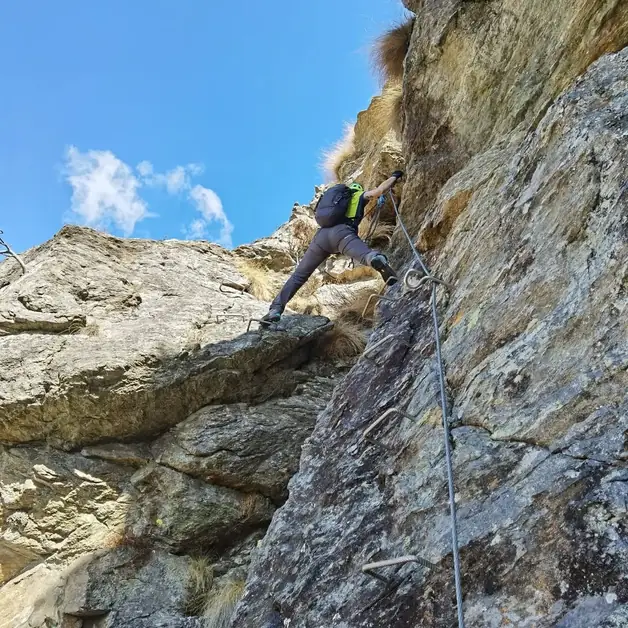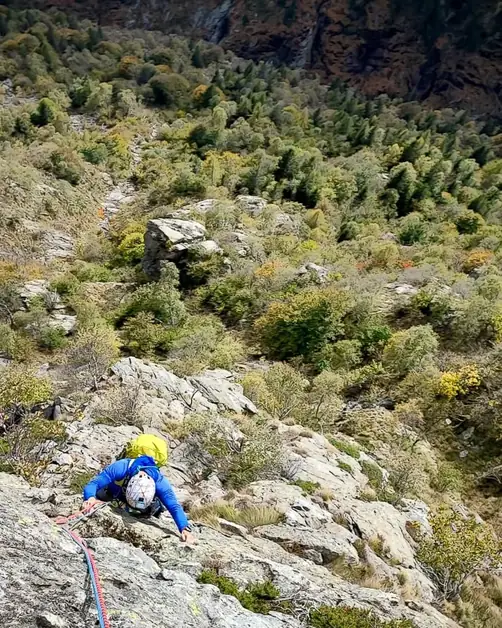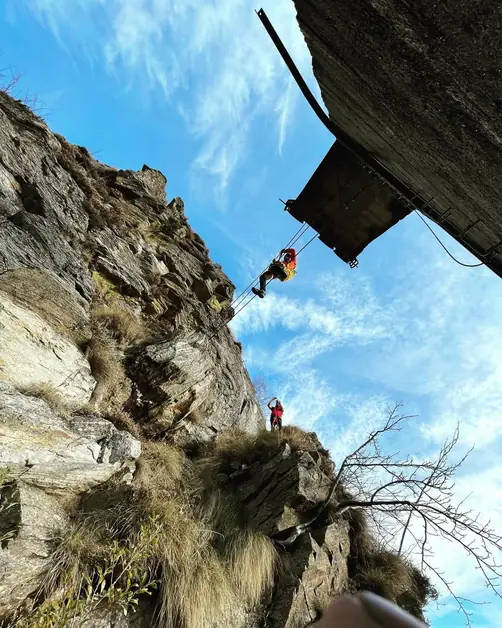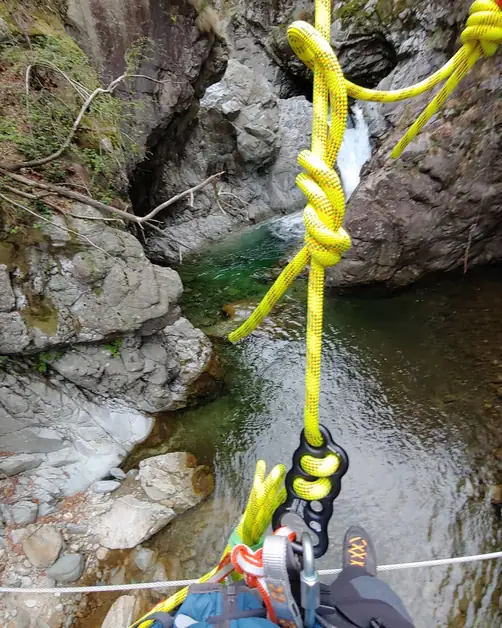Oropa a climbing paradise between faith and nature
Oropa is the ideal destination for climbing lovers amidst nature and spirituality.

Where is Oropa and why is it an ideal climbing destination?
Oropa is located a few kilometers from Biella, in Piedmont, at the foot of Monte Mucrone, in the heart of the Biella Prealps. It is mainly known for its famous Marian Sanctuary, a UNESCO heritage site, but in recent years it has also become one of the most beloved destinations for sports climbing and mountaineering enthusiasts.
The natural environment of Oropa is unique: beech forests, mountain streams, solid gneiss walls, and a panorama that ranges from the Po Valley to the peaks of Monte Rosa. This perfect mix of spirituality and adventure makes Oropa a special place for those who love the mountains in all their forms.
What are the main climbing crags in Oropa for climbing enthusiasts?
The Oropa area offers several crags and climbing sectors for all levels, from beginners to more experienced climbers. Here are the main ones:
* Mucrone Crag: the most well-known and frequented, with routes on solid rock, well-bolted lines, and difficulties ranging from 4a to 7b. The view over the Oropa basin is spectacular. * Piacentini Wall: perfect for those looking for long and technical routes, with sections of adherence and movements on small holds. * Oropa Cross Sector: higher up, offers exposed and panoramic routes, ideal on summer days. * Oropa Stream Crag: located lower down, is great for those looking for a shaded and cool crag during the hot months.
The crags of Oropa are easily accessible from Biella or the Sanctuary, and many routes have been renovated by CAI Biella to ensure maximum safety.
What types of routes can be found in Oropa?
The climbing routes in Oropa are very varied and suitable for all styles:
* sport routes with bolts, ideal for those who want to train; * multipitch routes for those seeking an alpine experience; * natural boulder sections scattered near the stream.
Many routes follow the characteristic gneiss slabs typical of the Biella area, offering technical and balance climbing where foot precision is essential.
Those who love classic routes can try the Via dei Piacentini on Mucrone, a great classic with a view over the basin, or the Via del Pilastro Centrale, much loved by local climbers.
What is the best time to climb in Oropa?
The climate in Oropa is mountainous, so climbing is recommended from May to October. In spring and early summer, temperatures are ideal, while in mid-summer, climbing can also be done at higher altitudes to avoid the heat of the plains. Autumn is one of the most beautiful times: the forests turn red and yellow, and the walls offer wonderful light for taking photos. In winter, however, many walls remain snow-covered, but it is possible to practice dry tooling and ice climbing in the colder areas of Mucrone.
How to reach Oropa from Biella?
From Biella, take the provincial road that climbs towards Oropa Sanctuary (about 12 km). Once you arrive at the large parking lot of the sanctuary, you can continue on foot to the walls, all reachable in 15-40 minutes of walking. For the higher sectors, such as the Oropa Cross or Mucrone, you can take the Oropa cable car, which takes you to the upper station in a few minutes, saving a drop of almost 800 meters.
Where to sleep and eat in Oropa and surroundings?
The Oropa area offers various accommodations for those who want to spend a weekend of sports and relaxation:
* Savoia Refuge and Rosazza Refuge, located near the cable car, great for climbers and hikers. * Foresteria of the Sanctuary of Oropa, an economical and suggestive solution to sleep in a place full of history and spirituality. * Agritourisms and B&Bs in Biella and Sordevolo, for those who prefer to stay in the valley.
For dining, there are typical trattorias where you can enjoy polenta concia, Biella cheeses, braised Nebbiolo, and chestnut desserts. After a day on the wall, a warm dinner with a view of the mountains is the perfect way to end the day.
What to do in the evening after a day of climbing in Oropa?
In the evening, you can choose between tranquility and relaxation or social life and culture. Those who stay at altitude can enjoy the silence of the mountains, perhaps admiring the stars from the sanctuary square. In Biella, however, there are bars and wine bars where you can taste Piedmontese wines and typical dishes in a welcoming atmosphere. In summer, there are cultural and musical events in the areas of Sordevolo, Pollone, and Biella Piazzo, ideal for those who want to discover the authentic face of the territory.
What to see around Oropa besides climbing?
Besides the climbing walls, Oropa is a true natural and cultural jewel. Do not miss:
* the Sanctuary of Oropa, with its cloisters, basilica, and museum; * the Botanical Garden of Oropa, which hosts rare alpine species; * the Mucrone cable car, from which panoramic treks to Monte Camino and Lake Mucrone start; * the Burcina Park, between Biella and Pollone, perfect for walks among rhododendrons and views over the plain.
Oropa is also a starting point for exploring the Oasi Zegna, the Sanctuary of San Giovanni d’Andorno, and historic villages like Rosazza and Campiglia Cervo.
Why choose Oropa for a climbing weekend?
Because it combines nature, culture, sport, and spirituality in one place. Here you can climb in the morning, visit a sanctuary in the afternoon, and dine in a mountain trattoria in the evening. The variety of crags, the tranquility of the landscape, and the proximity to Biella make Oropa one of the best climbing destinations in Piedmont.
Those looking for an authentic place, where time seems to pass more slowly and the mountains are still real, will find in Oropa a special place to remember.


